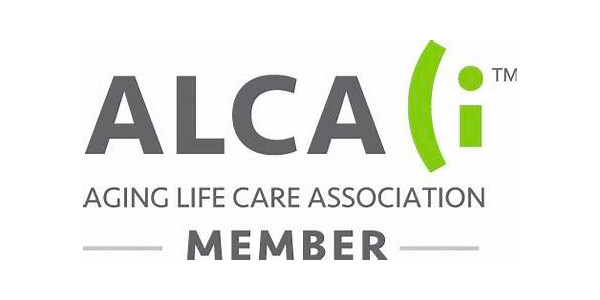Reflections of My Stay in the Blue Zone, Okinawa, Japan

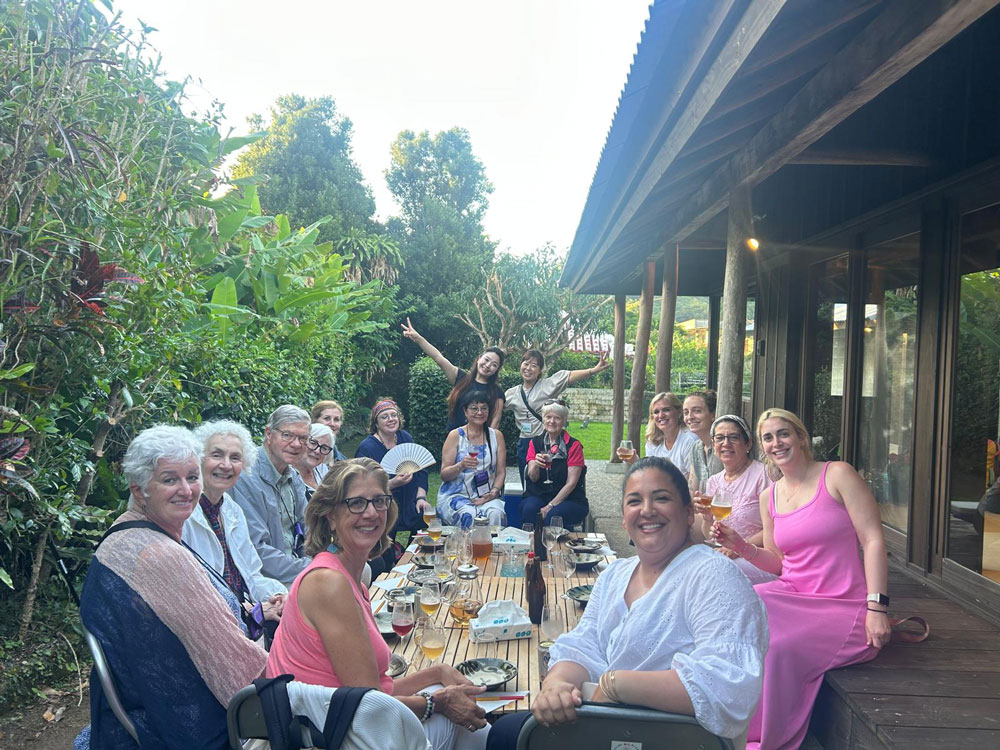
Professional group welcomed to Ogimi Village with an authentic barbeque meal
I immediately felt a different kind of energy with a feeling of calm and peacefulness walking quietly through the Northern Okinawan Ogimi community on foot, led by our young Sherpas with our luggage in tow to our traditional Okinawan Villa that would be home during our stay. This feeling of calm and total joy stayed with me throughout my time in Okinawa learning the secrets of Okinawan longevity from our Sherpa guides, a wonderful lecture from Takahiro Oshiro (TACO) a disciple of Dr. Masashi Arakawa, a leading researcher of Okinawan wellness and longevity and most importantly from time spent with the elders themselves. I will be forever grateful for their generosity and hospitality.
To process my observations and takeaways requires understanding: What are the Blue Zones? The term “Blue Zones” was first introduced in 2000 by demographer Michel Poulain and physician Gianni Pes during their study of longevity in Sardinia, Italy. They used a blue pen to mark areas with high concentrations of centenarians on a map, referring to these regions as “blue zones.” Dan Buettner, a National Geographic Fellow and journalist, popularized the concept through his work. In November 2005, he authored a cover story for National Geographic titled “Secrets of Long Life,” which brought widespread attention to these longevity hotspots.
Building on this, Buettner published his first book, The Blue Zones: Lessons for Living Longer from the People Who’ve Lived the Longest, in April 2008, further exploring the lifestyles and environments of these regions in various parts of the world.
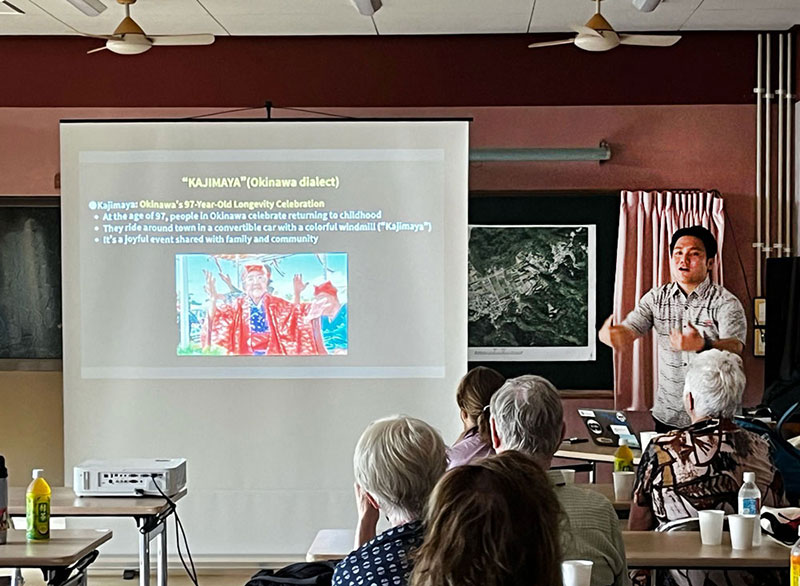
Takahiro Oshiro (TACO) a disciple of Dr. Masashi Arakawa, a leading researcher of Okinawan wellness and longevity
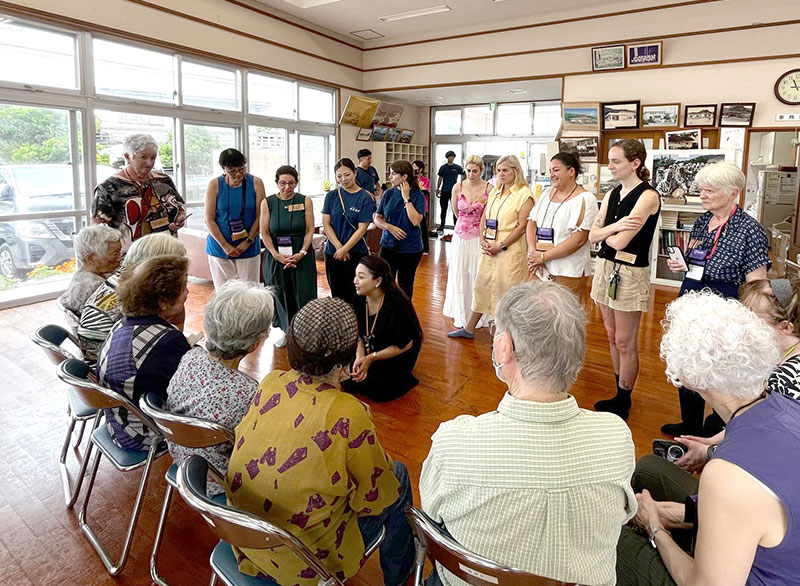
Senior Day Program in Ogimi Village
Our experience commenced with a thorough cultural lecture. We then arrived at a Senior Day Program in the Village and had the honor of being welcomed to participate in an exercise class that was honestly quite rigorous. As I participated, I watched the group of 10 ladies in their 90s not only follow the exercise instructor but do the exercises strongly both from sitting and standing positions. I observed no walkers, no canes, their faces with beautiful skin, and white teeth as they smiled at us. After exercises ended, this group of women treated us to a traditional dance in the center of the room. We participated in a large circle around them. I can only express this experience as completely joyful.
We then were able to talk with a group of five lifelong friends through our lovely guide who interpreted for us. When we asked, “What is your secret to living long and healthy lives, we learned of their lifelong jobs on a citrus plantation, or in the family fish business. In their culture, you are not “old” until you are 80. You continue your life as you always have. They told us that each day they played a game called “gateball” similar to croquet. This daily physical activity is something they have always done and continue to do. A few of the ladies were widowed and lived alone but their family and community were all around them, interacting with them daily. Their connections to their community and families were no different now than when they were young, just their generational progression within the community. They described their unique purpose and engagement in life that gave each day meaning and a reason to get up in the morning. In addition, daily exercise along with a nurturing diet explains their good health in such older years. Their age is celebrated by their community which I found profound as I reflected on my clients at home.
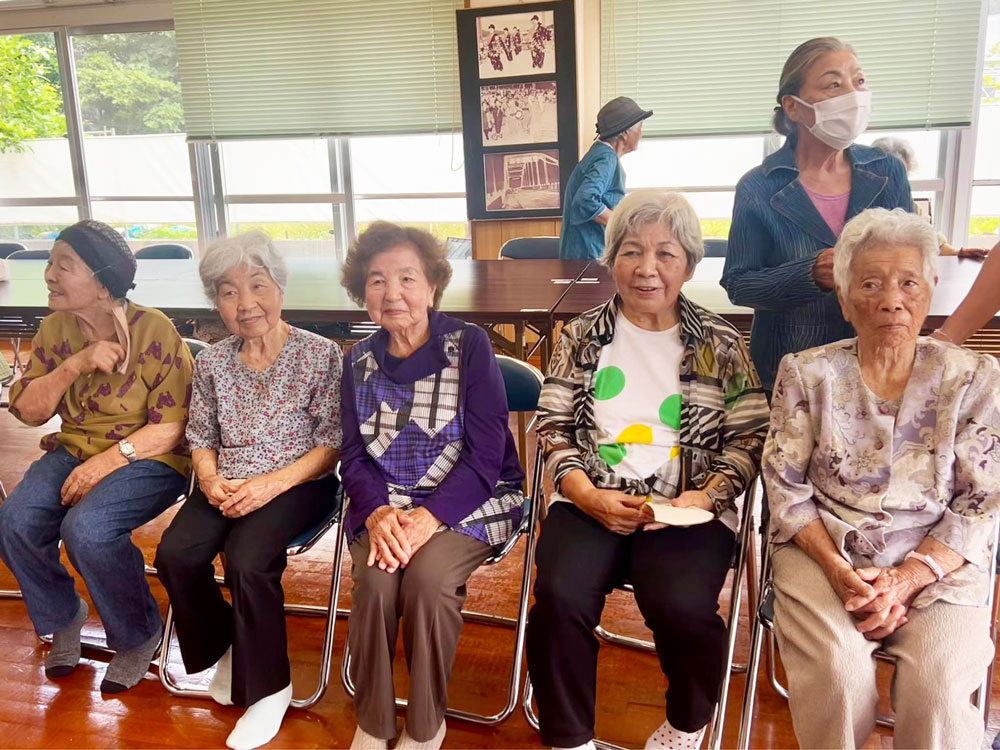
In addition to their daily routines, the spiritual life of Okinawans is strong. The community is connected from the mountain to the land and then to the ocean as one. This triad represents a continuum of life, energy and interconnectedness that is central to Okinawan spiritual life. Nature is sacred and as we experienced during our solo guided mindfulness hike through Asmui National Park in the Yanbaru Forest, located at the most northern part of Okinawa’s main island, one can feel the energy in the forest, the breeze, the view of the ocean and land below and learn the sacred history that connects the people to this.
https://www.asmui.jp/spiritualtour

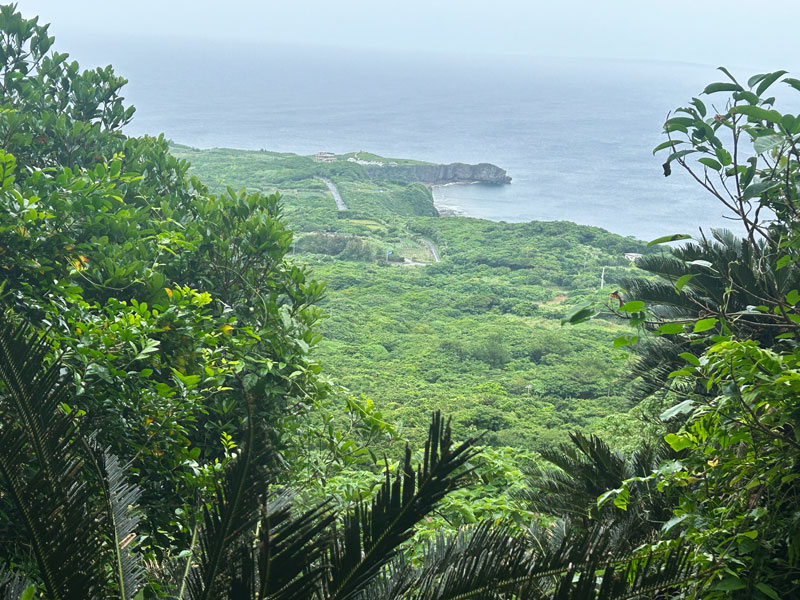
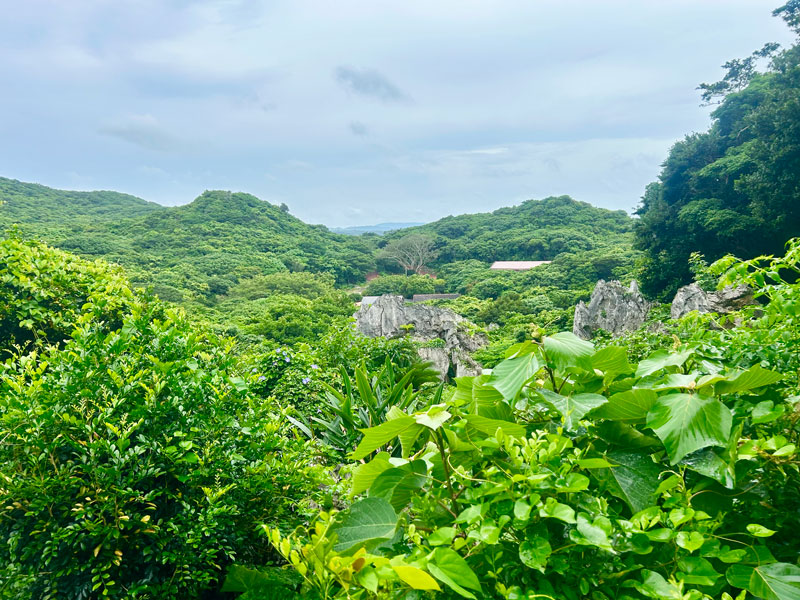
After our meditative hike through the sacred forest, we were treated to an authentic Okinawan meal at a small restaurant high up a curvy mountain road. The woman who owned the restaurant would take a reservation, then go to her mountainside crops and personally harvest all the ingredients for the meal. She proudly told us about each dish, with our guide interpreting. This is an example of the Blue Zone life. Physical activity, healthy nutritious food using the land and life with purpose to serve those who come to her restaurant. It was wonderful! I must express how clearly and deeply from the bottom of my heart, how uplifted and joyful I felt while interacting with all the members of the Ogimi community.
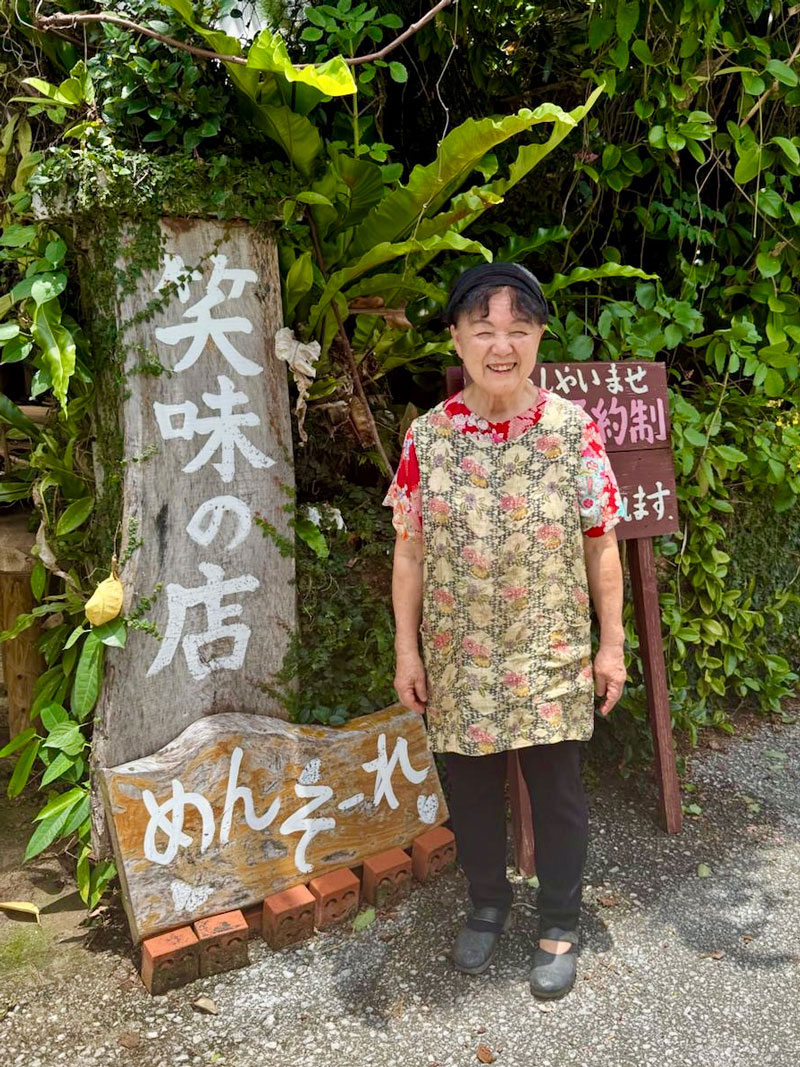
Okinawa restaurant owner who made our beautiful authentic meal
Spending decades as a Geriatric Social Worker caring for older adults, my focus and passion in recent years has been to not only mentor a new generation of Care Managers but to create a program that would offer older adults the knowledge and education they need to avoid the pitfalls of aging when there is no plan prior to experiencing decline. Everyone should have the tools to navigate living their best life (https://symphonycaremanagement.com/aging-gps/). The spiritual and practical applications of Okinawan culture and tenets integrate completely with our philosophy for how we can all age well. Here is TACO’s summary of the Key Lifestyle Elements behind Okinawa’s Wellness Longevity and my take-aways from them. I hope that this gives you pause to think about your own lifestyle and ways to have more joy.
Key Lifestyle Elements Behind Okinawa’s Wellness Longevity: 9 Rules of the Blue Zone
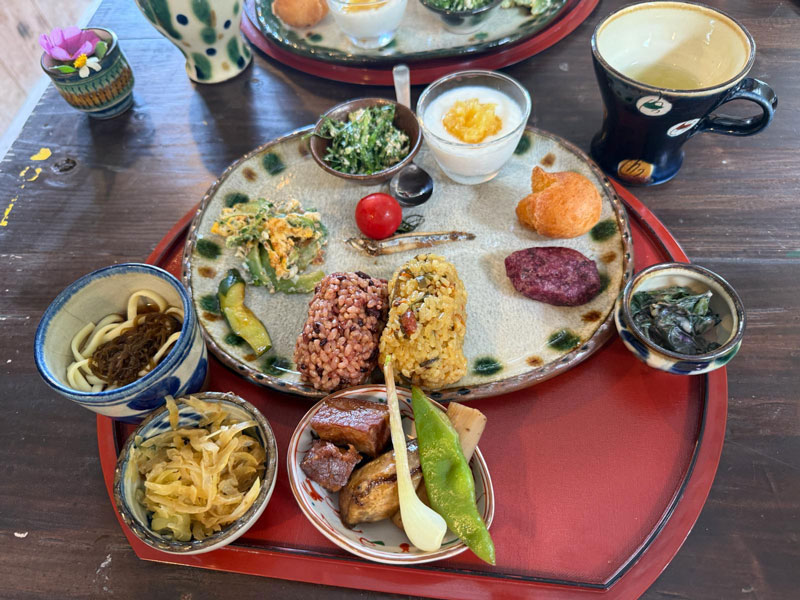
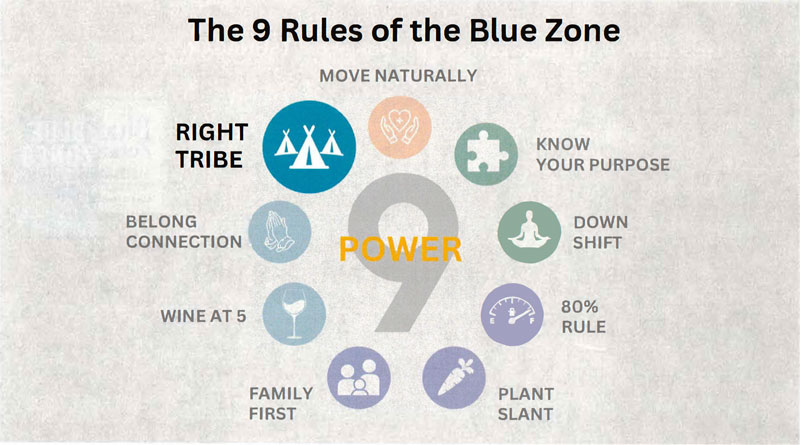
Dietary Habits and Food Culture
Joan’s take away: One of the healthy practices of the residents of Ogimi community is to say, “hari-hachi-bu” which translates to “stop eating when you are 80% full”. It is a Confucian teaching that encourages mindful eating and portion control so you can help prevent overeating and its potential negative impacts on health and longevity. This saying has stayed with me and I find that I am not only focused on the nutritious content of enjoyable healthy food, but I feel so much better to not be so full, even when what I am eating is delicious! In the Blue Zone food is medicine. The nutritional value of a diet with a plant-based focus is an enormous lifelong health practice. Many of our clients who live alone do what is easy for meals. Often that means a frozen dinner. Food is not only to keep us alive; it is part of the joy of life. In our time in the Ogimi community we were served not only delicious nutritious food but it was presented to us in beautiful pottery dishes, arranged with care and love. It was a social and engaging event we cherished. Our clients need and deserve to enjoy their meals, not merely subsist from them.
Physical Activity and Exercise
Joan’s take away: In our culture here, women often put the needs of their families first and themselves last. Work life balance is difficult at best and what tends to suffer is self-care which can mean we do not have time to exercise. We sit at our desks and without being aware, our bodies ache. In Okinawa, movement throughout the day naturally-working in the garden, walking to meet friends to chat, having a low bed that requires you to do a squat to stand up, and playing games like gate ball all keep them moving throughout their lives. Only in the past year or so did I return to exercising on a regular basis lifting weights and swimming laps. I feel strong not only in my body but mentally as well. My balance has improved and I know that like the Okinawans, if I consistently stay strong as a way of life, I will continue to be independent and enjoy a multitude of joyful activities. We must prioritize physical activity as if it were a lifesaving medical prescription.
Rest and Sleep
Joan’s take aways: Sleep problems in our culture are an epidemic. Certainly, there are biological changes in our sleep as we age but in the Blue Zone communities, they have a slower paced life with less stress. Their life rhythm of eating well, meaningful activity, engagement and rest seems to translate into good quality sleep leading to good health and wellness. In Okinawa I did not watch TV, and was not on my computer or cell phone. All day I was active and engaged and at night dropped onto my futon that rested on the tatami mat floor and slept through the night feeling rested and ready in the morning for the day’s events. With my two Villa mates we got up one morning at 5 am and walked quietly through the community, out to the ocean and took a swim on the unspoiled beach that belongs to everyone. It was beautiful!
Social Capital
The Blue Zone tenet that I feel is a missing link to well-being in our culture is the nurturing of the human spirit through social connections. In the Ogimi community older adults are as much a part of community life with friends and family as they have always been throughout their lives. This bond of family through generations and friendship and love give older adults the “why” for getting up every day. At the daycare center we visited, the participants interacted with staff for many activities they enjoyed but they came there, at ages 90-95 to spend the day with their lifelong friends, to talk about their family, reminisce, discuss their gardens, their recipes, and to laugh. In our culture, independent living, assisted living and other types of retirement/residential community living offer older adults a path to build new connections when family and friends and their long-time homes are no longer accessible. We often see our clients thrive as they experience that renewed sense of belonging and learn new things. This option needs to be available to everyone who can benefit from it, not just those who can afford it. For those clients who choose to “age in place” at home, we can create community through day programs, companions, and technology. For those with a diagnosis of cognitive impairment, living in the present moment and creating that good feeling that connections bring is critical to living a quality life.
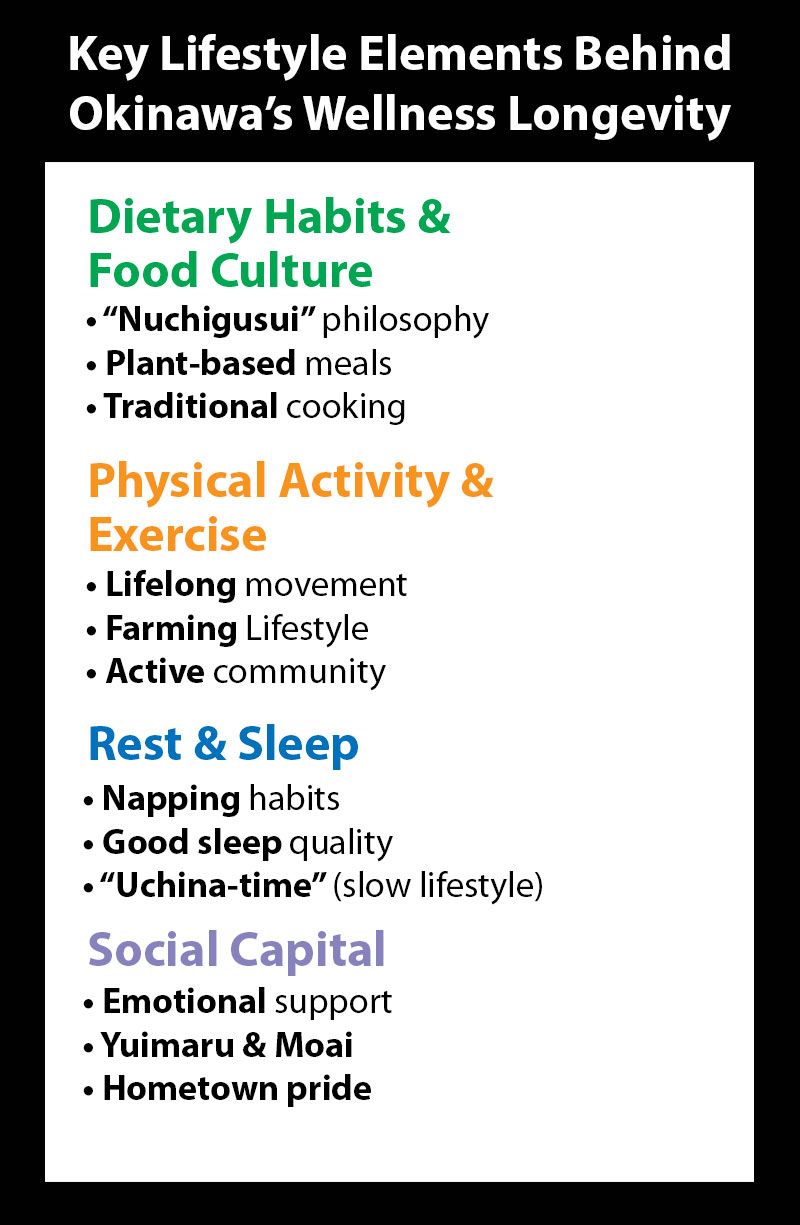
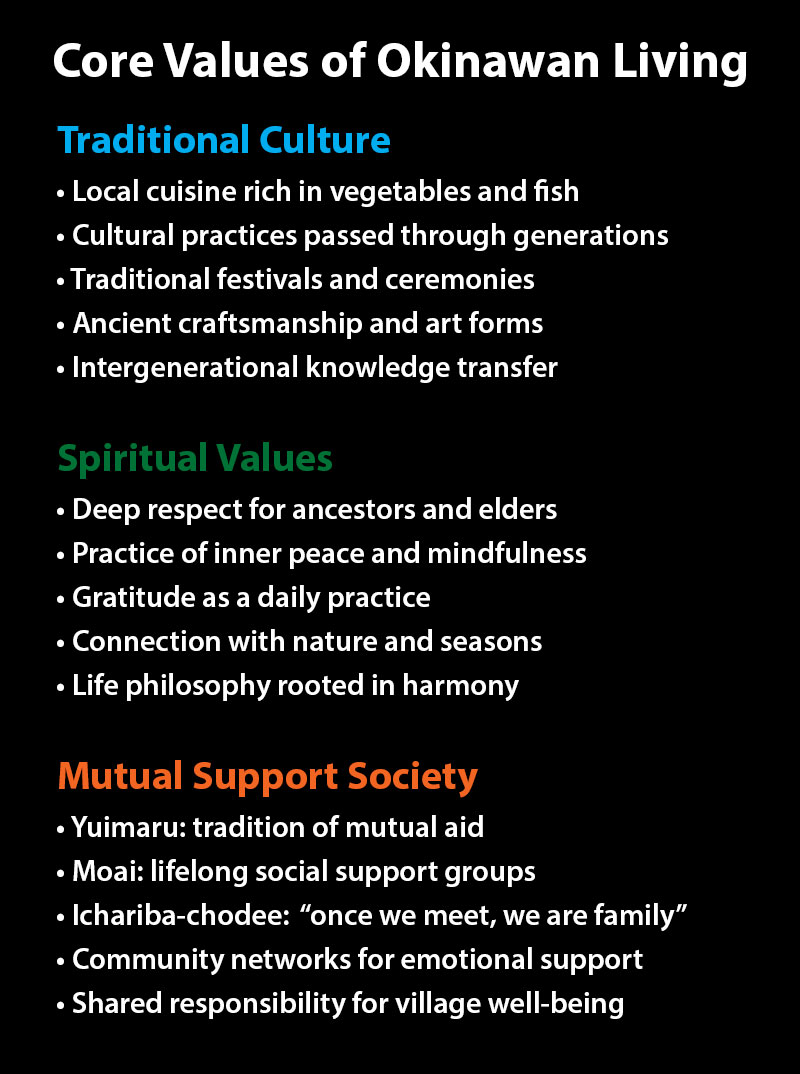
Truly, this experience has changed my focus as a passionate career “elder care expert and advocate.” While we go about our daily work assessing the needs of our older adult clients, understanding who they are and their goals, coordinating medical care, responding to emergencies, implementing layers of support to keep our clients safe at home and accomplish all the planning and problem solving that we do to facilitate life’s transitions, after witnessing the true joy of life the healthy elders in the Ogimi Village, I know we can implement the lessons learned and impact the quality of life of those we serve in a more meaningful way. We can bring more joy into our clients’ daily lives by using the teaching given to us.
In summary, I hope that my experience and the insights I shared into a culture that values its members at all ages—and lives life fully by following the nine tenets of the Blue Zones—give each of you pause to reflect on what truly matters most in your own life. At Symphony Care Management, we will add our wellness-focused module to our care plans, making it the central focus and heart of our services. Join our newsletter and let us continue this discussion.


